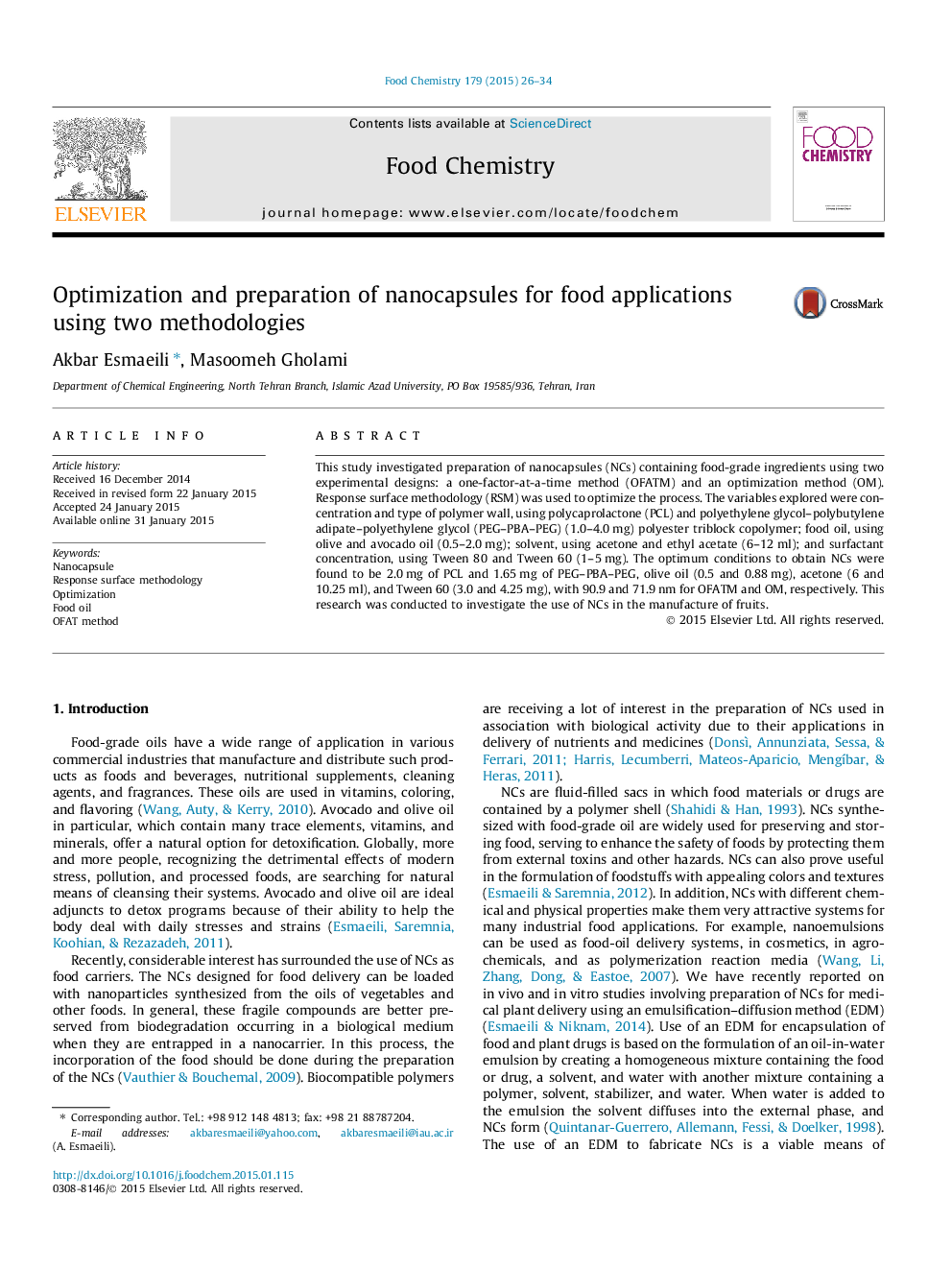| Article ID | Journal | Published Year | Pages | File Type |
|---|---|---|---|---|
| 7592143 | Food Chemistry | 2015 | 9 Pages |
Abstract
This study investigated preparation of nanocapsules (NCs) containing food-grade ingredients using two experimental designs: a one-factor-at-a-time method (OFATM) and an optimization method (OM). Response surface methodology (RSM) was used to optimize the process. The variables explored were concentration and type of polymer wall, using polycaprolactone (PCL) and polyethylene glycol-polybutylene adipate-polyethylene glycol (PEG-PBA-PEG) (1.0-4.0Â mg) polyester triblock copolymer; food oil, using olive and avocado oil (0.5-2.0Â mg); solvent, using acetone and ethyl acetate (6-12Â ml); and surfactant concentration, using Tween 80 and Tween 60 (1-5Â mg). The optimum conditions to obtain NCs were found to be 2.0Â mg of PCL and 1.65Â mg of PEG-PBA-PEG, olive oil (0.5 and 0.88Â mg), acetone (6 and 10.25Â ml), and Tween 60 (3.0 and 4.25Â mg), with 90.9 and 71.9Â nm for OFATM and OM, respectively. This research was conducted to investigate the use of NCs in the manufacture of fruits.
Related Topics
Physical Sciences and Engineering
Chemistry
Analytical Chemistry
Authors
Akbar Esmaeili, Masoomeh Gholami,
